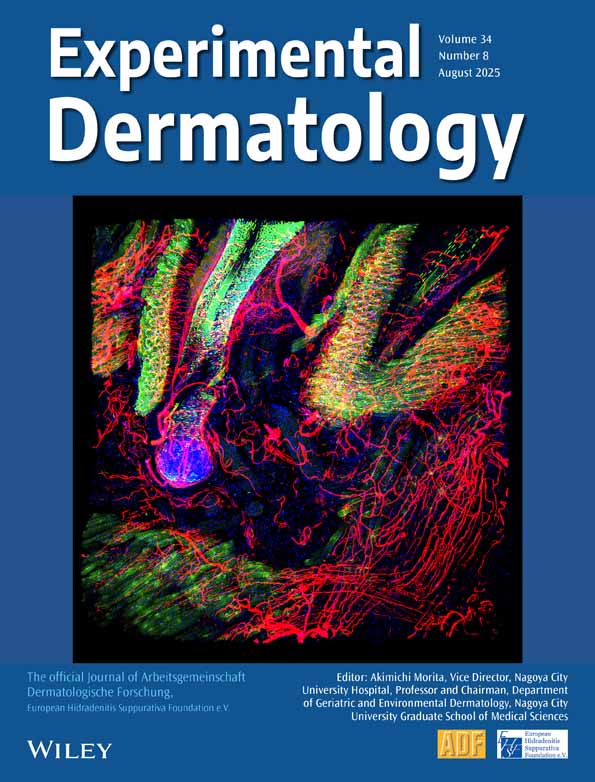CRH peptides modulate human hair follicle growth in vitro– a preliminary study
Abstract
Mammalian skin may contain an equivalent of the hypothalamic-pituitary-adrenal axis (HPA), composed of locally produced corticotropin-releasing hormone (CRH) that, together with signalling via CRH receptor 1 (CRH-R1) and CRH-R2, may regulate local homeostasis. Studies in murine skin have demonstrated significant hair cycle-dependent fluctuations in the expression of CRH and urocortin peptides and CRH-Rs genes, suggesting a modulatory role for this signalling system in hair growth/cycling. This study was designed to investigate the effects of ligands showing increased selectivity for CRH-R1 [(D-Glu20)-CRH (10−7 and 10−8 m)] and CRH-R2 [(D-Pro5)-CRH (10−8 and 10−9 m)] and (D-Pro4)-urocortin (10−7 and 10−8 m) on human hair growth in ex vivo culture. (D-Pro5)-CRH can also activate CRH-R1, while (D-Pro4)-urocortin is highly selective for CRH-R2. Anagen hair follicles (HFs) were isolated from human scalp and stimulated for 9 days, with 10 HFs tested per CRH peptide concentration. Preliminary findings indicate that (D-Pro4)-urocortin (10−8 m) stimulated a 79% mean hair fibre elongation compared to the initial HF length over the 9-day study period. (D-Glu20)-CRH (10−8 m) also stimulated hair fibre elongation of 63% of initial length, while (D-Pro5)-CRH (10−9 m), which inhibited hair fibre elongation, compared to unstimulated controls. In agreement with our previous detection of CRH-R1 and CRH-R2 in human HFs, the above data suggest the existence of a functionally active CRH peptide/receptor system in cultured human HFs and suggest that signalling via these receptors may participate in the regulation of human hair growth/cycling in vivo.




